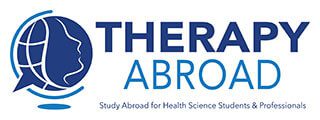-Thailand Cultural Activity-
Muay Thai and Pre-Physical Therapy: Integrating Traditional Martial Arts into PT Education
Muay Thai, Thailand’s national sport and a revered martial art, is far more than just a combat discipline. Known as the “Art of Eight Limbs,” it utilizes punches, kicks, elbows, and knee strikes, engaging the entire body in a symphony of movement, balance, and strength. Beyond its status as a competitive sport, Muay Thai holds immense value in the realm of physical therapy, making it an innovative and practical addition to a pre-physical therapy (pre-PT) program.
Understanding Muay Thai’s Role in Physical Therapy
Physical therapy focuses on improving movement, reducing pain, and preventing injury. Muay Thai inherently requires practitioners to develop flexibility, stability, and coordination—key principles in rehabilitative science. By integrating Muay Thai into a pre-PT curriculum, students can gain hands-on experience in movement mechanics, injury prevention, and rehabilitation techniques, all within the framework of an ancient and culturally significant practice.
Movement and Biomechanics
Muay Thai training involves dynamic movements that require a deep understanding of joint function, muscular engagement, and neuromuscular coordination. Through participation, pre-PT students can analyze how different strikes and defensive maneuvers influence the body, gaining insights into applied biomechanics.
Injury Prevention and Rehabilitation
Like any physically demanding sport, Muay Thai comes with a risk of injuries, from sprains and strains to more severe musculoskeletal conditions. A pre-PT program incorporating Muay Thai can teach students how to assess, prevent, and rehabilitate common martial arts injuries. By working with fighters, students can apply therapeutic exercises, taping techniques, and recovery protocols in real-world scenarios.
Balance, Proprioception, and Neuromuscular Training
Muay Thai emphasizes footwork, balance, and reaction time, all of which enhance neuromuscular control. Pre-PT students can observe and practice training methods that improve proprioception and stability, skills that are directly transferable to physical therapy interventions for patients with neurological or musculoskeletal impairments.
Muay Thai and Thai Culture: A Deeper Connection
Beyond its physical aspects, Muay Thai is deeply rooted in Thai culture and tradition. Originating centuries ago as a means of self-defense, Muay Thai has evolved into a disciplined practice imbued with respect, perseverance, and spirituality. Before fights, athletes perform the Wai Kru Ram Muay, a ritual dance that honors their teachers, ancestors, and the sport itself.
Incorporating Muay Thai into a pre-PT program in Thailand offers students not just a technical understanding of physical movement but also an appreciation for the cultural context that shapes rehabilitation practices in the region. Understanding a patient’s cultural background is crucial in physical therapy, as it allows practitioners to tailor treatments in a way that respects traditions and personal beliefs.
Implementing Muay Thai in a Pre-PT Program
A structured pre-PT curriculum that integrates Muay Thai can include:
- Workshops on biomechanics and movement analysis
- Hands-on rehabilitation training with Muay Thai athletes
- Injury assessment and prevention techniques
- Collaboration with local therapists specializing in sports rehabilitation
- Cultural immersion activities, including observing Muay Thai rituals and training practices
By merging the science of physical therapy with the discipline of Muay Thai, pre-PT students gain an immersive, holistic education that enhances both their clinical skills and cultural competence. This unique approach not only enriches their understanding of human movement but also prepares them to work with diverse patient populations, making them more effective and empathetic future practitioners.
Keywords: movement, balance, strength, flexibility, stability, coordination, rehabilitative science, movement mechanics, injury prevention, rehabilitation techniques, joint function, muscular engagement, neuromuscular coordination, biomechanics, musculoskeletal conditions, assess, prevent, rehabilitate, therapeutic exercises, taping techniques, recovery protocols, footwork, balance, reaction time, neuromuscular control, proprioception, stability, physical therapy interventions, movement analysis, rehabilitation training, local therapists, sports rehabilitation, Cultural immersion, training practices, clinical skills, cultural competence, diverse patient populations
Partners: https://www.facebook.com/thebearfightclub
https://www.facebook.com/stinghivemuaythaigym
Featured media: Thai Boxing 1.jpegThai Boxing 2.jpegThai Boxing group .jpegThai Boxing STILLS

 Share
Share
 Tweet
Tweet
 LinkedIn
LinkedIn
 Pin
Pin
 Email
Email
